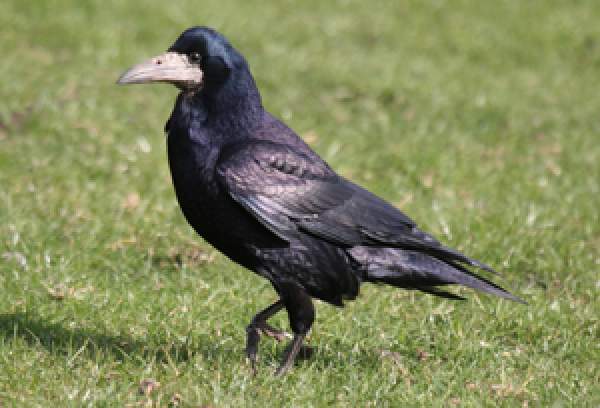Rook
Corvus frugilegus

Rooks are quite a large member of the crow family, slightly smaller in size than the Carrion Crow. They have a slender bill with an area of white bare skin at the base of the bill. Juveniles are black-faced, but all ages have shaggy feathers at the top of the legs. The head shape is distinctive with quite a steep forehead.
Rooks are very sociable birds and are rarely seen alone, nesting communally and foraging in groups. Successful pairs stay together for several years, often for life, and rear their young in the familiar rookeries. The most important foods are grain and soil invertebrates, the former placing them on a list of species regarded as being pests by farmers.
There are not many areas of Britain or Ireland without Rooks and they seem to be doing quite well after some declines in recent years. There are probably 1.4 million pairs now in the British Isles and we are the most important area for the species within Europe. Most colonies are of a modest size but one of the biggest, near Aberdeen, easily exceeds 1,000 pairs even now and had over 6,000 pairs in the past!.
Find out more about Rooks on BirdFacts and the Wider Countryside Report.






Share this page